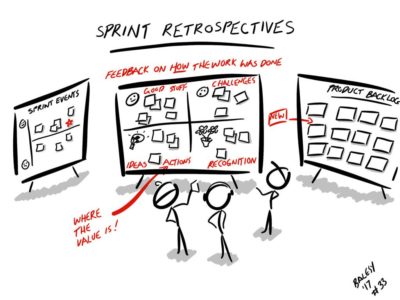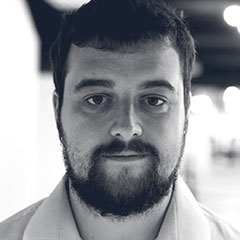Ever since I started my career as an Agile Project Manager, I have had the main ceremonies of the Agile process carved into my core. The daily stand up, updating the team and stakeholders on progress and blockers. The demo or showcase, a (hopefully) shining celebration of what has been built in the last development cycle.
But one ceremony always felt very different to me, and that was the retrospective. The focus on team health and problems with actions to improve and fix issues was something alien to me from my previous career. The methodology was far loose and allowed for personal flair and preference far more than the other ceremonies.
When I started it was the most basic of methods and almost like my early stand-ups had three core questions: What has gone well? What hasn’t gone well? What can we do to try and change it? Whether it was a picture of a sailing boat, a plane or a superhero, with the questions tweaked to fit the theme, it ended with post-it notes and some open-ended actions to try and improve things… write smaller PRs to make the process faster and easier… commit to more pair programming e.t.c. I think 75% of retros ended with the same or similar actions. It wasn’t great and the team weren’t engaged and so retros began to be seen as a burden and so happened less and less.
However, I did my own retrospective on retrospectives. What was going well? Well, we did find out some issues and did agree on some actions to try and improve things. What wasn’t going well? Not everyone seemed to participate as much and a lot of the time sessions seemed to end up in the same place. What could we do better? Who knows, watch videos and try and learn from those better in how to be more engaging in retros.
As time went by and roles changed, I was introduced to a different method. It wasn’t groundbreaking as an idea but applied to a retro it was, the idea of having a series of questions and everyone answering with a traffic light style answer. And so we tried it. And it worked. We printed off red, yellow and green cards and worked out a set of questions, everyone voted and people were invited to give their opinion as to why they had chosen the colour. It was great! The team was engaged and everyone had an equal chance to talk and discuss. It was a facilitator’s dream, but we saw the opportunity to do better, so we built the Retro App. I mean we are a tech company and so a tech solution seemed the logical next step to take a process we found to work and make it digital.
We added features and continued to extend our range of questions, beyond just our current projects but also how we run as a company. The insights we got from the team have helped shape the direction we are moving in. Plus, having a digital offering expanded our ability to look at the results. We could see trends over multiple retrospectives and ask why this was the sentiment and why our actions were or weren’t having the desired effect, we could see sudden
changes and ask what had changed. As a man who loves playing with data and spreadsheets, it was a treasure trove!
So what do I want you to take away from this? Firstly, retros are crucial and even those early ones I ran where I was still learning generated some great outputs. It always gives your team the opportunity to talk openly about how things are progressing. Secondly, if you’re not happy with how a ceremony is going ask folks about how to improve it, we never would have moved to a traffic light system if we hadn’t done that.
Finally, especially as more teams move to a remote model, having a digital solution really helps to keep the team engaged and keep the company culture alive even without the office.
If you’re interested in trying out our retro app get in touch at retro@thestartupfactory.tech or just check it out at https://tsf-retro.web.app/.


